Flowers are blooming, the air is warm, and the birds are singing their sweet songs from the treetops once again. Spring and early summer are without a doubt my favourite times of year—the Earth is coming back to life, and so am I. For those of us in the Northern Hemisphere who follow the Pagan Wheel of the Year, Beltane is the Sabbat celebrated from April 30th to May 1st, marking the midway point between the Spring Equinox and the Summer Solstice. As one of the four main ancient Celtic fire festivals, Beltane roughly translates to “bright fire,” and is a celebration of fertility, new life, and passion, as we see the vitality of the Earth returning.
Beltane (or May Day) is an occasion that’s been celebrated by many cultures throughout time, and is often associated with fertility and agriculture-related deities. In some Pagan traditions the celebration marks the union of the God and Goddess, or May Queen (often a personification of fertility and the beauty of spring/summer) and the Green Man, a symbol of our spiritual connection to the land and its cycles of life, death and rebirth.
The Green Man is a fascinating symbol that has been found in many different cultures spanning thousands of years. While the origins of this figure remain unknown, he typically associated with the pre-Christian religion of the Celts, though the validity of this has been debated. Regardless of his exact origins, to me and to many Pagans like me, the Green Man remains an important symbol of nature’s cycles, and plays a significant role in the honouring and celebration of the Earth, particularly around Beltane.
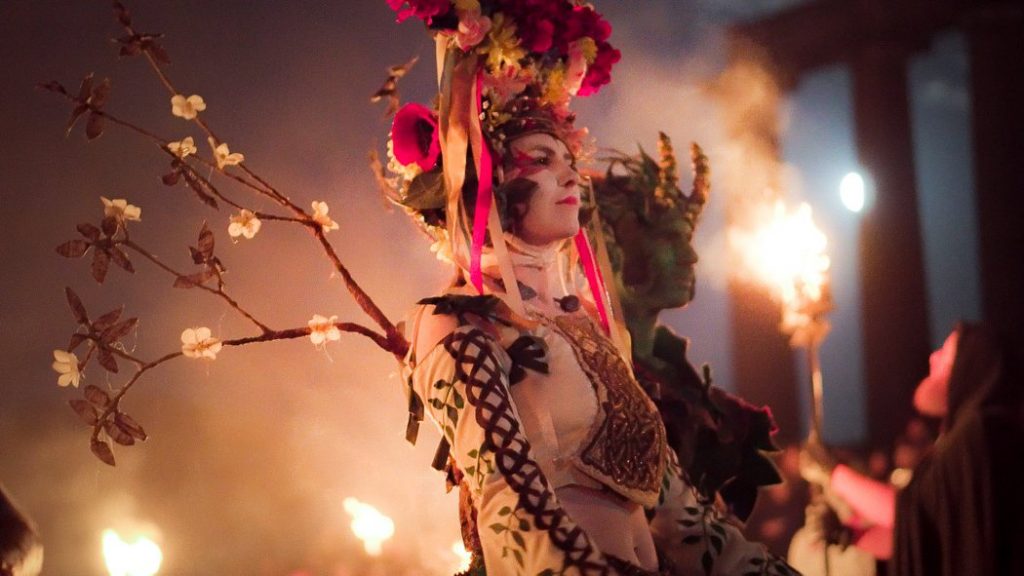
The Beltane Fire Festival
Last year for Beltane I attended the Beltane Fire Festival in Edinburgh, Scotland—the largest celebration of its kind in the world. The Festival is a modern reinterpretation of ancient Celtic rituals, and brings thousands of people together from across the globe to celebrate the coming summer as we move out of the darkness of winter to fully embrace the light once again.
The main attraction of the Festival is a procession led by the May Queen and the Green Man, with the end of the night marked by their marriage, symbolized by the lighting of a huge bonfire and signifying the beginning of summer.
Other aspects of the Festival include half-naked performers coated in red body paint, representing the wild, sensual spirits of summer, writhing, twisting, shouting, licking and biting anything (or anyone) they can get their hands on; fire dancers moving gracefully with the flickering light of their flames; and an intense, rhythmic drum beat that carries spectators through the night. It’s an evening fueled by sex, unabashed passion, delirious intoxication and the primal celebration of life.
It is, I believe, the essence of Beltane, and it’s absolutely amazing.
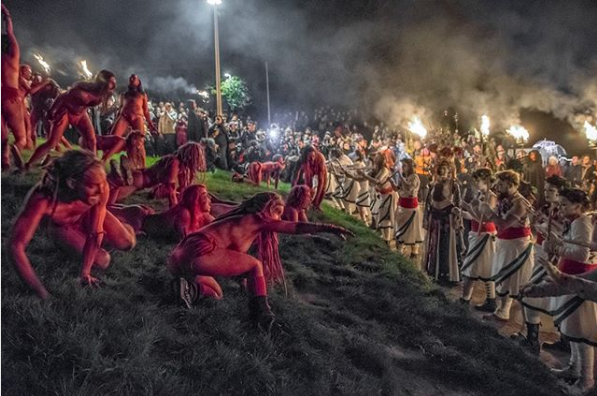
Since I’m back home in Canada now, I’m really quite disappointed that I won’t be able to attend the Fire Festival this year. But of course, there are plenty of other ways to celebrate the Sabbat, whether alone or with others, that incorporate the sentiment of the season and don’t require attending a huge festival.
Problematizing Beltane
But, before I get into some of the ways you can celebrate Beltane this year, there’s something I need to address first. Beltane (or at least, what Beltane has become) gets a serious bit of hate from some of the Pagan community because of its associations with sex, fertility, and certain gender roles. As writers like Jason Mankey, Scarlet Magdalene and Misha Magdalene have rightly pointed out, these overt associations can be alienating for those who don’t identify with typical gender binaries or heteronormative forms of sexuality. It also brings up a whole host of issues relating to things like sexual assault, consent, and the abuse of power by certain members of the community to take advantage of others. For many, a celebration centred around the union of a young, straight maiden to a young, straight man and the insemination (and eventual birth) that this implies isn’t overly relatable, and a Sabbat that focuses solely on these things can quickly take on a sense of exclusivity.
However, Mankey, Magdalene, and others like them also note that historically, Beltane wouldn’t have been about fertility or sexual passion at all, but rather would have been centred on the purification and protection associated with the fire. The association with fertility is something we’ve adopted over time, and it’s now got to the point where it’s basically the main thing we attribute to the Sabbat.
In theory, I don’t have anything wrong with the connections to sex, fertility, and love, and I love the metaphor of the union between the May Queen (or Goddess) and Green Man (or God). But that’s also because to me, it’s a metaphor for the Earth’s fertility as we move into the Spring and Summer months.
The thing about contemporary Paganism is that it is an experiential, and (to an extent) highly individualized kind of spirituality. Part of its beauty is that you can take what you like and leave what you don’t. Beltane is about a lot more than fertility and human sexuality—so if those things don’t do it for you, then there’s no need to include them in your own celebrations.
But whether you want to include sex and love and raw passion into your interpretation of Beltane or not, I do think it’s important that we recognize our tendency to highlight fertility and particular gender binaries in relation to the Sabbat can be seriously alienating, and understand that it makes the occasion feel less-than inclusive.
I certainly don’t want to be part of a Paganism that isn’t completely open and accepting to people from all walks of life, of all genders, and all sexual orientations. So, even though for me, Beltane is definitely very much about sexuality, pleasure, and romance (especially because it’s the day before the anniversary of my relationship with my partner—4 years this year!), I’ve also included lots of suggestions for ways you can celebrate that don’t really relate to fertility or sex or gender at all.
Beltane, the Otherworldly, and the This-Worldly
Situated at the opposite end of the Wheel of the Year from Samhain, the Sabbat most closely associated with death, darkness, and our inner shadows, Beltane is about revering life in all its forms. Samhain and Beltane also mark the two points of the year where the veil between this world and the spiritual “Otherworld” is thought to be at its thinnest: spirits and otherworldly beings are able to pass more easily from other planes of existence into this one, and intuition and our sense of magical consciousness may be heightened.
But whether you believe in spirits and other such beings or not, to me Beltane is about going out into the world, emerging from our winter hibernation, and celebrating the Earth and our uniquely human experience of it. It’s about truly living in and with our bodies, and reveling in our sensual experience of the world, rather than allowing ourselves to be trapped within the confines of the mind and ego. If the dark half of the year is about turning inwards and embarking on a journey of deep self-exploration, then the light half of the year is about moving outwards: exploring the world and discovering our place within it.
So, here are 11 ways that you can celebrate Beltane this year, whether as a solitary practitioner or in a group!
1. Get Down and Dirty
As I mentioned before, our modern reinterpretation of Beltane often depicts it as a celebration of love, fertility, and pleasure–basically, of sex. If you have a partner, main squeeze, friend with benefits, whatever, getting intimate is a fantastic way to celebrate the season. If you’re currently flying solo, then making some time to give yourself some sweet loving is also great. This time of year can definitely be about giving into those primal desires and allowing yourself to be completely wrapped up in pleasure.
If it’s something you think you might be into, consider trying out a form of sex magick this Beltane—basically, using the power of your orgasm to cast spells or fuel a particular intention. Similar to how tantra is about harnessing sexual energy to achieve enlightenment or reach a higher state of consciousness, incorporating sex into magick and ritual can be a means of strengthening the connections between mind, body, and world, and subsequently manifesting that which we desire. Sex magick can be performed alone or with a partner (or partners) and can include things like invoking certain deities such as Aphrodite or Eros, repeating mantras, or “charging” sigils by focusing on them while attaining orgasm. Alternatively, it can simply be about strengthening the bond between you and your partner, or increasing the love that you have for yourself.
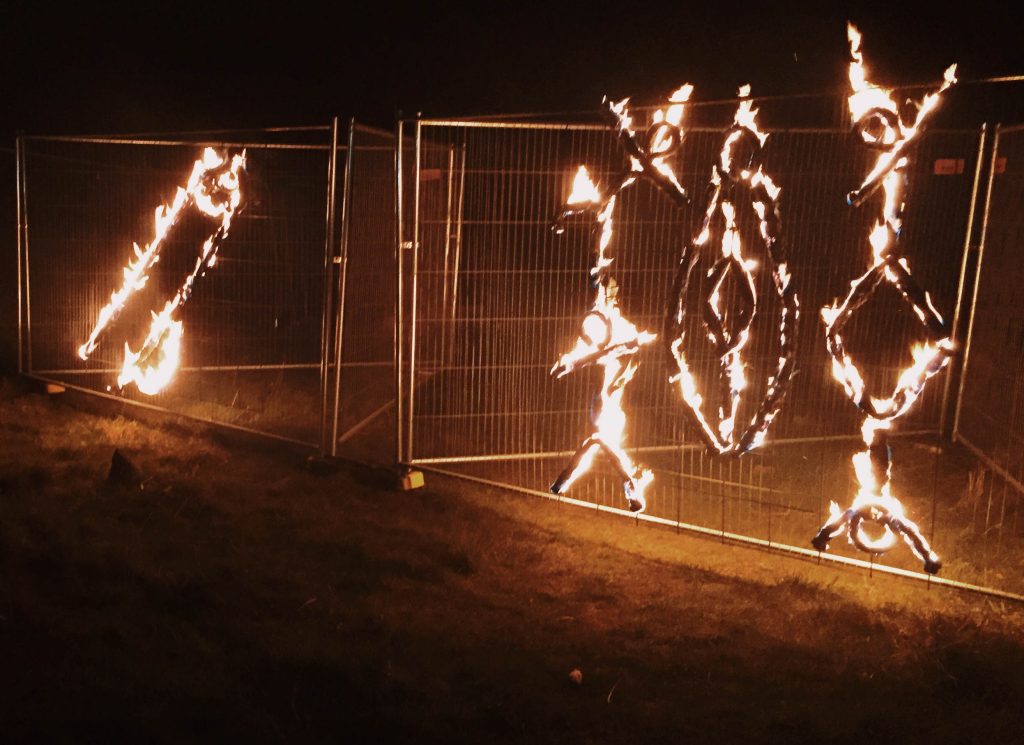
2. Celebrate Your Body and Indulge in Self-Care
As I mentioned before, this is a time for heightened sensuality and excessive pleasure. I see Beltane not only as a celebration of the Earth, but also of the body—the physical, visceral nature of our existence. Take the time to thank your body for all it does for you, for how it allows you to have this incredible human experience on this amazing planet.
There are plenty of ways we can enjoy sensual pleasures and show our bodies our appreciation (see my post on magick and self-care for some ideas). Take a long bath, eat your favourite foods, lounge around in your silk pyjamas—do whatever makes you feel good, and celebrate the glorious temple that is your body.
3. Eat, Drink, and Be Merry (Emphasis on the Drinking)
One of the many reincarnations or forms of the Green Man is that of Dionysus or Bacchus. Dionysus is of course the Greek god of wine, excess, and drunkenness—all of which are associated with the celebration of Beltane. He’s the party god, and the coming of May often marks the beginning of wild summer festivals and days spent drinking in the sun. Whether it’s having a couple beers with friends, or getting totally pissed, Beltane welcomes all of it! (Bonus points if you’re drinking mead or wine you’ve made yourself—there are certainly some cool recipes online I’d like to try out!)
Of course, this isn’t for everyone, and many people don’t like incorporating alcohol into their Sabbat celebrations or spiritual workings, but for me, Beltane wouldn’t really be Beltane without at least a little bit of intoxication!
4. Play with Fire
Originally one of the four major Fire Festivals in Celtic tradition, contemporary Pagan interpretations of the Sabbat still place significant emphasis on the use of fire. A fantastic way to celebrate the occasion is by having a bonfire on the beach, in a forest, or wherever else you can (safely, obviously). If that isn’t an option, consider lighting a small fire in your cauldron, or use red and orange candles to symbolize the element.
This is a great time for rituals or spells that involve the use of fire (particularly in relation to purification and protection), such as candle or cauldron magick. One thing I’ll be doing is burning letters I wrote to myself on Samhain, the Sabbat that sits in opposition to Beltane, in order to release myself of its darkness as I fully embrace the light and love that the summer months bring.
5. Spend Time in Nature
Seeing as how Beltane is really all about celebrating the incredible vitality of the Earth as it reawakens after a long winter slumber, be sure to spend some time outside and rejoice in the beauty of nature! The Sabbats are first and foremost about observing the turning of the Wheel of the Year and the Earth’s ongoing transformation, so one of the best ways to celebrate is by going on a walk or simply sitting in nature and appreciating these changes.
As you do, be sure to engage all of your senses, and truly experience the world around you. Practice mindfulness and being in the moment by listening to the birds chirping, smelling the scent of newly blooming flowers in the air, and feeling the warmth of the sun on your face. If it’s raining, stand outside and really feel the wet drops as they hit the surface of your skin. Get out of your own head and be present in your body and in the world.
6. Garden
The beginning of May is a great time to get out into the garden. Clear out any debris and plants that may have died in the winter, and prepare the soil for new life to take their place. If you don’t have your own garden, go shopping for some new indoor plants, or start an indoor herb garden. Depending on where you live, this is often an optimal time of year to start planting those new seeds.
7. Decorate Your Altar
I absolutely love decorating my altar around this time of year with lush greens and vibrant colours to celebrate the return to life. Colours like red and orange are especially prominent around this time as they’re associated with the passion and fire of the season. I also enjoy covering my altar with shells, flowers, and other things I’ve collected from outdoors, like leaves and bits of tree bark to symbolize the flourishing of the Green Man. By including these gifts from nature on my altar, I like to think that the lines between indoors and outdoors, natural and unnatural, and self and world are blurred, the dichotomies subverted.
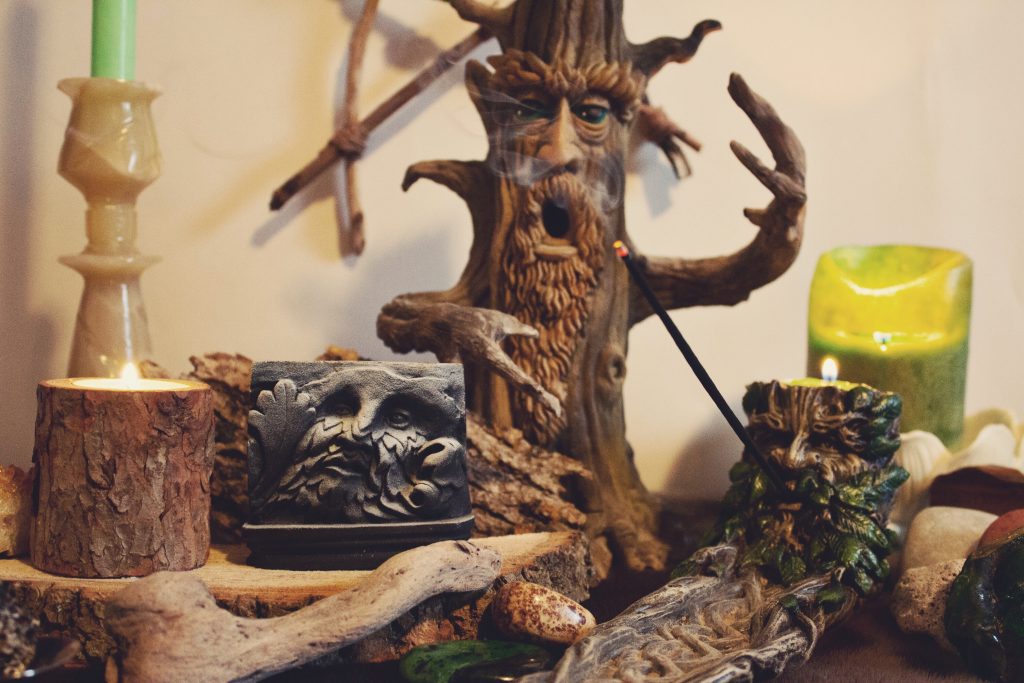
8. Leave Offerings for Faeries and Otherworldly Beings
While I don’t necessarily believe in the literal existence of faeries, fay, or any other otherworldly beings, I know many Pagans and witches that do, and this time of year when the veil between this world and the otherworld is once again at its thinnest, encounters with these such creatures are much more frequent. As such, you can leave offerings of honey, milk, sugar, and other sweet things at your altar, around your house, or outdoors (just remember if you’re leaving anything outside make sure it’s made of organic/biodegradable materials).
Even if, like me, you don’t actually believe in faeries, it can still be a fun Beltane activity to take part in (especially with children!). Remember, the “thinning of the veil” can also mean the thinning of the separation between the conscious and unconscious aspects of our minds, resulting in heightened intuition, imagination, and an ability to see the world through a more magical perspective. I maintain the position that belief is and should be fluid and mutable, adapting to fit any given situation. So, on Beltane especially, I like to suspend my disbelief and see instead how anything is possible—including faeries emerging from their hiding places to snack on a plate of honey.
9. Do Something Positive for the Environment
Since Beltane is largely a celebration of the beauty of life on earth, what better way to observe the Sabbat then by taking care of our planet? I’m sure I don’t need to tell anyone about the extent of the damage we’ve done to our environment, and the fairly grim situation we’ve put ourselves in. But even though the destruction we’ve caused may seem completely overwhelming, leaving some of us wondering how we could possibly help rectify the situation, the truth is that every little bit really does help.
So, this Beltane, consider what actions, big or small, YOU can take to promote the health and sustainability of this magnificent planet. For instance, take a couple trash bags on a walk with you and participate in the #trashtag that’s been circulating these past couple months. Consider eating vegan for a week, or ride your bike to work instead of driving. If you’ve been thinking about attempting a low/zero waste lifestyle, Beltane would be a great time to start your journey! There are so many things you can do to show the Earth your love and appreciation.
10. Make Some Beltane Crafts
Despite its ancient origins, Beltane as it is today is largely about fertility, and ultimately, creativity. We see the creative unfolding of the universe in the blooming flowers, growing leaves, and newly teeming wildlife. Use this fertile energy to tap into your own creative potential—do some artwork, start a new creative project, or make some Beltane-related crafts. It’s a great time of year to remake some of your spiritual symbols and tools, like a pentacle or your wand. Using organic materials found outside is especially good for this, as you’re working in tandem with the vital force of the universe to create something beautiful and spiritually meaningful.
Also, making jewelry and other crafts using rose quartz is fantastic for Beltane, particularly if they’re to be given to others, as it’s tradition to gift people the crystal around this time as a symbol of love and friendship. Last year I gave my partner a rose quartz heart on Beltane, and I’ll probably do something similar this year.
11. Journal and Check in with Yourself
Finally, as we move out of the darker months and prepare for the joyous summer months to come, I think Beltane can be an opportune time to take a minute and check in with ourselves, particularly in relation to the past six months. As I mentioned before, Beltane and Samhain are on opposite ends of one another, each representing the major cornerstone celebrations of the light and dark halves of the year respectively. They’re also both associated with the thinning of the veil and the dissolution of the separation between the conscious and unconscious aspects of our minds, so that the inner depths of self may be more easily accessible.
While Samhain was largely about turning inwards, about going deeper within the self to explore the shadowy corners of the soul, Beltane is about coming back to the surface, about returning to the light and living out in the world again.
If you did any journaling around Samhain, or undertook any deep personal reflection, return to it now. Think about all you went through, all you learned, and how you changed. See how far you’ve come since then, and consider what areas you still have work left to do in. Six months may not seem like much, but a lot of learning and growth can take place in that time. Celebrate your own growth and rebirth, and think about how you could expand and flourish even more over the next six months. Make plans for the summer, what you want to do, who you want to become, and begin to put them into action. This is a time of year for making things happen—use what you learned about yourself in the fall and winter to help manifest your goals and desires, and begin to make your dreams into reality.
So, there you have it: 11 ways you can celebrate Beltane this year! Thanks for reading, and have a fantastic Beltane! 🙂
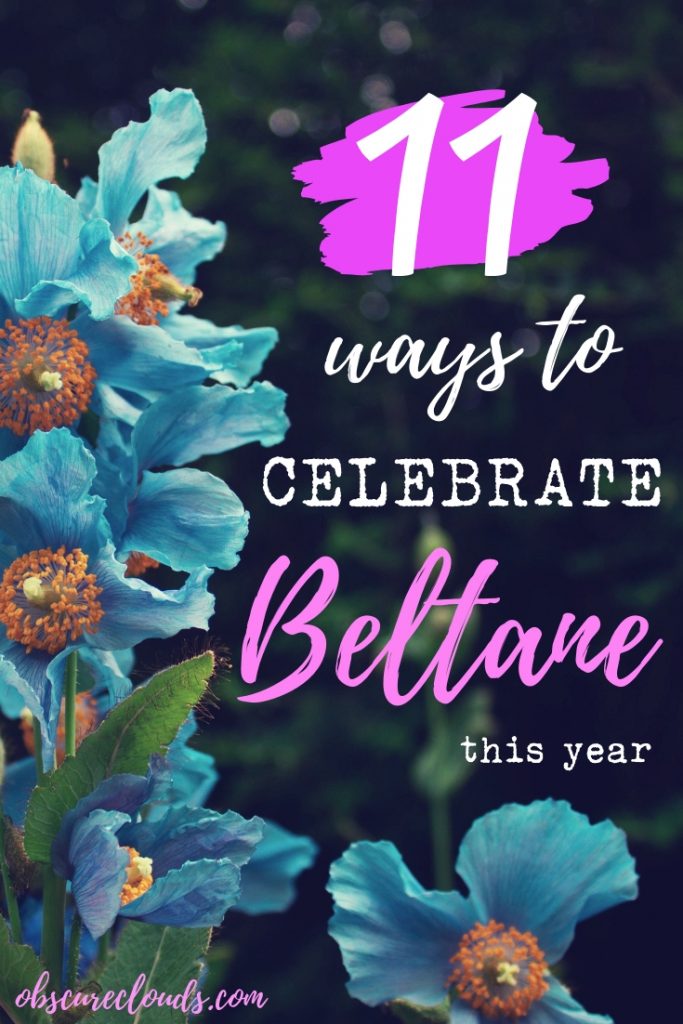

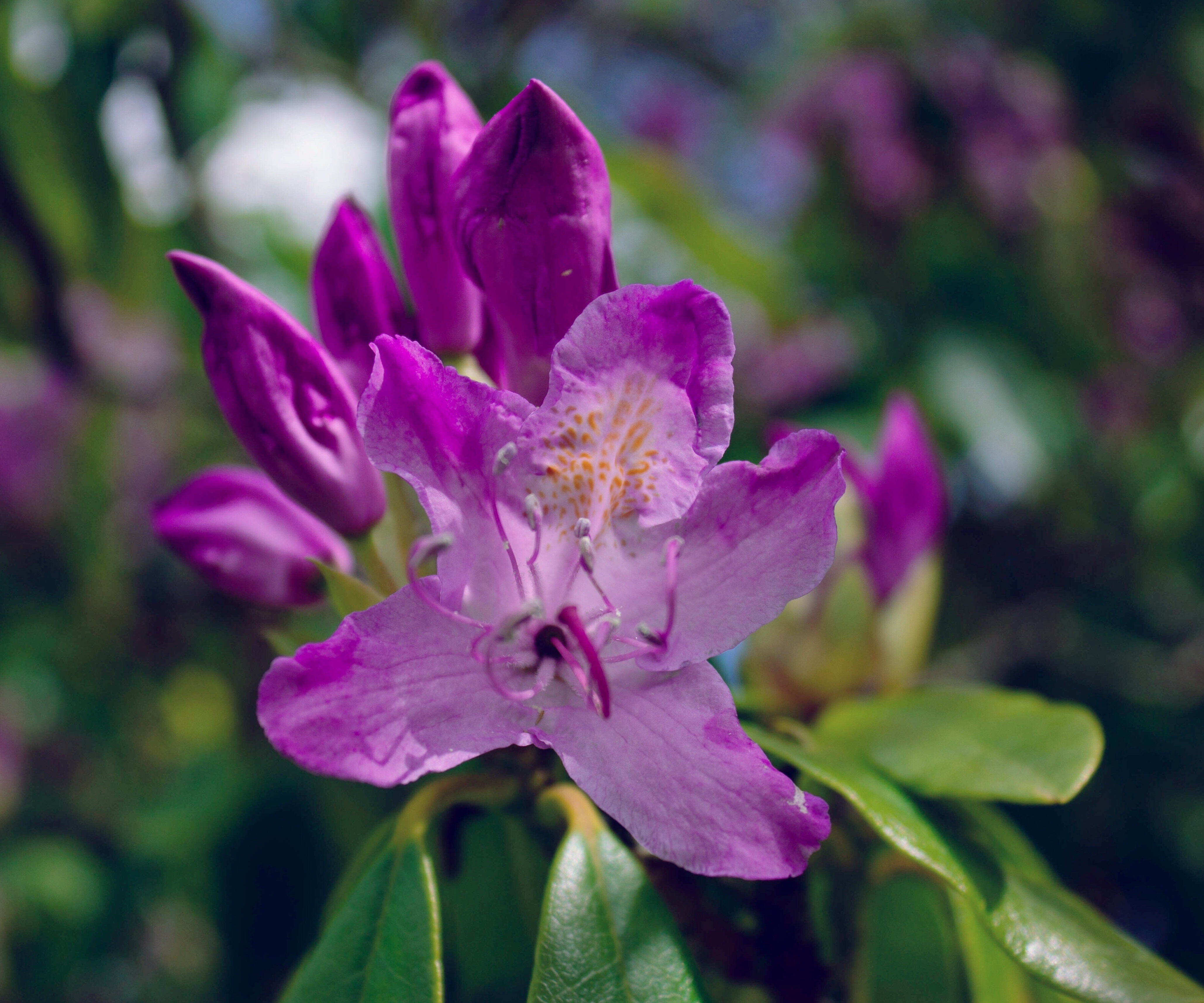

Hi Sarah. I found your site through your recent AMA on SASSWitches, and I’ve been reading some of your past posts. I have a specific question about festivals. Like you, I’m an atheistic sort of pantheistic practitioner who operates on the Psychological framework – I also have deities on my altar but same as you to me they’re symbolic tools and not a literal thing. Anyway, I wanted to ask, in light of that, why do you celebrate festivals like Beltane? After all, it’s not like we believe in the literal existence of the gods, so to speak. Cultural heritage might be a reason, I thought to myself, since carrying on historic customs is a great way to connect with ancestors, culture, and form personal identity. But for me – even though Beltane would fall within my own cultural heritage, it’s not something I’ve pursued because I felt it was just too connected to a religious path I don’t believe in.
Instead, as a SASS witch, I felt that grounding my annual festival calendar in something more astronomical resonated with me. It’s obviously no accident that pagan festivals fall on or very close to the same dates – the exact midpoint between Spring Equinox and Summer Solstice, for example, is 5th May – 6th May – I actually have my celebration on 7th May – I chose to deliberately shift it one day to coincide with the peak of the Eta Aquariid meteor shower. And instead of Samhain, I have a celebration on 17th November – quite a big shift from the mid-point, because I wanted to line up with the Leonid meteor shower peak.
I guess my question is this – if, as SASS witches, we don’t believe in divinites literally, and don’t engage in cultural practises of Celtic heritage, grounding practise in annual astronomical events seems like a great alternative. I’m super curious why you’ve chosen to go into those Celtic festivals – because I bet the astronomical thing occurred to you too. NOT a criticism, before anyone assumes my intent here. I figure if you’re choosing to celebrate these Celtic and Gaelic festivals you must have really thought about it and have an interesting reason as to why, and I love learning more from other SASS practitioners, so yeah, that’s what I’d like to ask about. 🙂